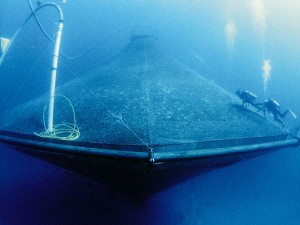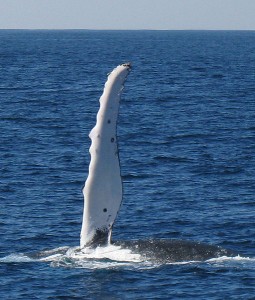OPINION: Enough with the Whales. Save the Tuna.
Blame it on the whales. And the dolphins.
Ever since they discovered that singing and dancing would get them into our good graces, things have been different.
By cooing to their young and gracefully splashing around, sea mammals have won some serious perks from the homo sapiens. That coveted “endangered” status was really just a flipper in the door to our popular culture. Movies, cartoons, stuffed animals, theme parks, and fanatical hipster reality shows have followed. In terms of public relations, the world is now their oyster.
No one knows how oysters feel about this.
For many citizens of the deep that are unable able to speak, life is getting rough. Thanks to booming economic growth in Asia and the ever-increasing desire in the west to look good naked (we claim it’s the omega 3s we’re after, but let’s be honest), human beings are snarfing down more fish than ever before.
And while tear-stained Hollywood starlets may paddle out on surfboards to protest the harpooning of a humpback, your average fin fish has a less glitzy fan base to rely upon for protection. Despite the efforts of concerned activists and a few governments, some quick swimming but soft-spoken critters are under threat.
For example, a recent report by the UN Food and Agricultural Organization made note that of 23 tuna stocks measured, “Most are more or less fully exploited (possibly up to 60%), some are over exploited or depleted (possibly up to 35%).”
Occasionally a celebrity will speak up on behalf of the tuna, but convincing the public that a sushi-grade bluefin deserves the same respect as a bottlenose dolphin is a tough task. Apart from moving too fast to be properly snuggled, the tuna suffers from a more serious problem. It tastes damn good.
When you’re succulent enough to be carved up and slapped on a plate with no cooking needed, you’re going to have trouble keeping chefs hands away from your belly. Sadly, in the case of the largely decimated Atlantic bluefin, the US government has declined to classify the species as endangered.
Although not in as much trouble as its fattier, pricier cousin, the Pacific bigeye tuna is still considered by the National Oceanic and Atmospheric Administration to be overfished. Fortunately, Hawaii has an important (and profitable) role to play in easing the pressure being placed on open ocean fish stocks.
With a tradition of fish farming dating back over a thousand years, the Aloha State is quickly becoming a focal point for 21st century aquaculture. An off-shore kampachi farm is currently in operation, and the Big Island is about to become home to the first open ocean tuna farm in the United States. Hawaii Ocean Technology Inc. has spent a tedious five years obtaining both federal and state permits to raise bigeye tuna in large underwater cages off the coast of Kawaihae.

Divers tend to an underwater cage. Image courtesy of the National Oceanic and Atmospheric Administration.
Environmentalists sometimes raise concerns over the impact of off-shore aquaculture (there is currently a lawsuit underway involving Big Island-based kampachi farming), but with global demand for ocean fish bound to continue rising, it’s in everyone’s interest that Hawaii’s growing aquaculture industry continue to succeed.
Rather than acting as obstacles to innovation, governments and environmental groups should work to streamline the permitting process for off-shore fish farming, and form close partnerships with producers to ensure we foster a reputation for clean, top-quality fish production in Hawaii.
Sea mammals have long been a public relations success-story, with tourists packing onto boats to witness Hawaiian humpbacks flirt. The tuna on the other hand, has failed to gain favor with us, being slaughtered by the millions only to be jammed into cans that are ironically labeled “dolphin-safe.”
The “steak of the sea” doesn’t have the patience to appear on camera for very long, so there probably won’t be any touching movies made about a boy and his bluefin. We can’t rely on popular culture to protect these creatures from overfishing.
Aquaculture is their best bet for long-term survival.















